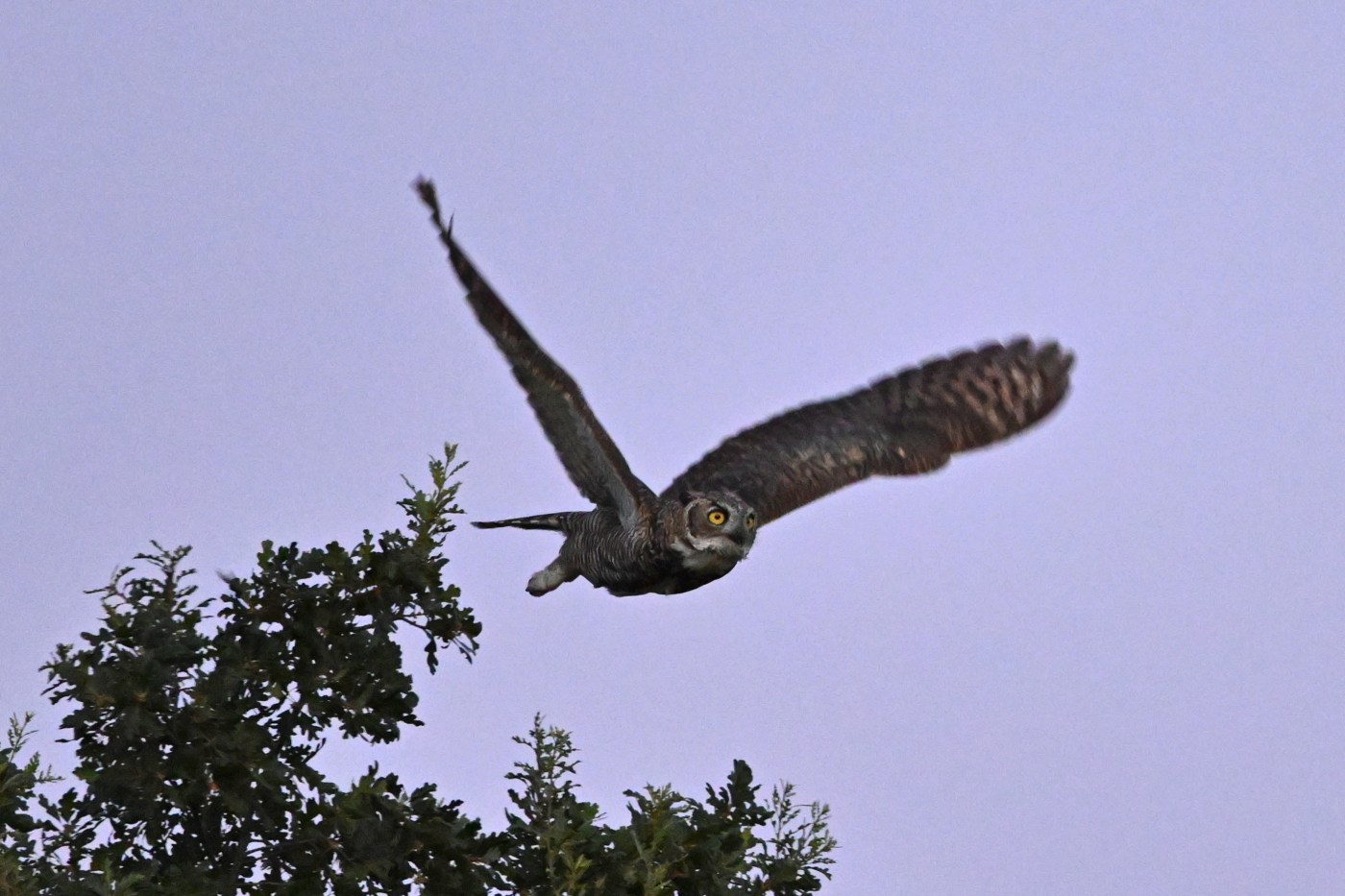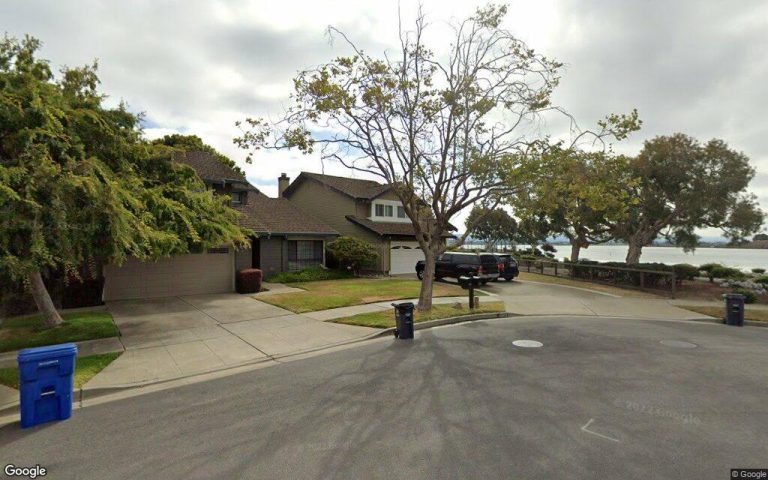Atlanta — The plight of Flaco, the Eurasian eagle-owl who escaped New York’s Central Park Zoo last year, showed just how tough it is to survive in a world altered by humans.
The gorgeous creature with a six-foot wing span, piercing orange eyes and tufted ears captivated the world as he flew freely throughout Manhattan. Flaco fans posted social media updates every time they sighted him soaring, landing and catching prey, sparking an intense love affair.
But then it was over. After a year on the lam, Flaco died after flying into a Manhattan high rise. Crying emojis dominated social media. The reactions almost seemed outsized – but paying attention to nature will do that to a person. We had come to know Flaco, in a way. A necropsy showed he had also ingested a potentially lethal amount of rat poison.
Falling for birds – why we are attracted to owls
Flaco, a Eurasian eagle-owl who escaped from the Central Park Zoo, died in February after flying into a building. A necropsy found potentially lethal amounts of rodenticide in his body.(Andrew Lichtenstein/Corbis News/Getty Images/File via CNN Newsource)
The attention to Flaco’s life and death isn’t an anomaly. During the pandemic, people who had never been interested in the wildlife in their own backyards began to take notice.
Owls’ popularity has soared in the US along with the number of Americans engaged in birdwatching. A survey by the US Fish and Wildlife Service found a whopping 96 million people now take part in observing or photographing birds in parks or their backyards. That’s double the birdwatching going on just eight years ago.
But there’s something particularly special about owls people seem to appreciate.
RELATED: How to make your garden more attractive for hummingbirds
“Maybe it’s because they look like us,” says, Denver Holt with the Owl Research Institute.
“They’ve got a big head; they have the symmetry of the eyes, nose and mouth,” muses Holt. “We tend to gravitate to animals with big, round eyes.”
Holt says owls are one of the most widely recognized groups of animals in the world. “They have been so since prehistoric times. In the caves of France, there are etchings of owls scratched on the cave walls.”
And, he says, they make such cool sounds – hooting, tooting, and trilling. They help humans with pests, he says, eating an average of six mice or rats a night. And they’re beautiful.
“Often with bright yellow eyes, it’s fascinating how these birds can hunt in the dark- their vision is amazing at night,” says David Wiedenfeld, Senior Conservation Scientist with the American Bird Conservancy.
“If you look at their feather patterns, (they’re) very intricate,” Wiedenfeld says. “Owls have special feathers that are softer than a lot of birds. They make almost no sound in flight,” so they can surprise their prey.
Owls are losing habitat, but all is not lost
Wildlife abounds in the redwood forest in Mill Valley’s Cascade Canyon where above a trail in the hollow of a time-worn redwood tree are two fuzzy baby owls, looking like Star Wars ewoks. (Ben Davidson Photography)
Sadly, many species of owls are declining with some highly threatened, says Wiedenfeld.
Of 19 owl species found in the United States, more than half are losing populations – a similar trend to all birds. The biggest reasons are habitat loss from climate change and human land use, collisions (especially during migrations) and pesticides that kill insects and rodents that owls rely on, according to the American Bird Conservancy.
“We have to start making sure we keep the habitat for the owl,” says Wiedenfeld.
Old-growth forests are dwindling in the US and Canada because of the high value of timber, a major reason for the huge drop in spotted owl populations, according to the American Bird Conservancy.
Open grasslands are shrinking where the tiny burrowing owl makes its home nesting in underground burrows.
Where it was once plentiful, the Burrowing Owl’s numbers have plummeted in Florida.
“Florida is largely turning into condominiums,” Wiedenfeld tells CNN.
The lack of open grassland has also impacted the short-eared owl, whose population has decreased an estimated 65 percent since 1970, according to the Audubon Society. “Much of that grassland is being used for agriculture – corn, soybeans, wheat,” says Wiedenfeld. The American Bird Conservancy is working with farmers to set aside some undisturbed land for nature.
The snowy owl
A snowy owl that found its way from the Arctic tundra of Alaska or northern Canada, keeps an eye out on its surroundings as it sits on a rooftop of a home in Cypress during its second week of living in the Southern California neighborhood, on Wednesday, January 4, 2023. (Photo by Mark Rightmire, Orange County Register/SCNG)
People who’d never birdwatched before have flocked to snowy owl sightings over the years, says Holt, the owl researcher. But their future also looks dim.
The snowy owl has lost half its population in the past 50 years, according to the State of the Birds 2022 report. Holt has been tracking them for more than three decades in Montana and their breeding grounds in Canada.
Last year, he and his fellow field researchers found zero nests. “It’s disappointing. Each year you go up with hopes the lemming population is high (their food source) and Snowy Owls will make a rebound. You get there, and you just don’t find nests.”
Owl experts say they don’t know exactly what’s causing the Snowy Owl’s decline, but the American Bird Conservancy says climate change is likely affecting their prey, as well as collisions with vehicles, communications towers, wind turbines and airplanes.
Seven things you can do to help save owls
Barn owls will often take up residence in a Bay Area neighborhood when they spot they like, but have been known to relocate if they encounter a predator or lack of food. (Frankie Frost/Bay Area News Group archives)
1. Keep large, older trees
Related Articles
Remnants of bird flu virus found in pasteurized milk, FDA says
Plan to kill Catalina deer using sharpshooters in copters attracts opposition
Dead gray whale washes up on East Bay beach
Did a pair of birds make a mistake by nesting in a Los Gatos hanging plant?
A frolicking humpback, 3 minkes and dolphins put on a show off California coast
Leaving trees is the most important thing people can do for most of the owls, says Wiedenfeld.
Most owls sleep and roost in tree holes which are often found in older trees. Many, like screech owls, will use big woodpecker holes or a hollow where a branch has broken off. Great horned owls, don’t use holes, but build their large nests in trees.
“A lot of people in suburban areas don’t like to leave old trees. They worry about them falling,” says Wiedenfeld. “But if you have a place where you don’t have to worry about safety or buildings, leave them so they can have tree cavities.”
“There are so many reasons people use to take snags down,” says Holt. “One of the last things they think about is their importance to wildlife.”
2. Leave some of yard natural or “messy”
A barred owl was spotted in Bolinas on Sept. 17 by Lucas Stephenson and photographed by his father Mark Stephenson, president of the Napa-Solano Audubon Society. Barred owls are eastern birds that expanded their range westward into the Pacific Northwest and more recently into California. Because they outcompete the native endangered northern spotted owl, wildlife experts are recommending their elimination. (Photo by Mark Stephenson)
Many homeowners strive to maintain spotless lawns with no weeds, no leaves, no brush, no mess. But if you want owls or any birds in your backyard, that’s not what draws them.
“Allow there to be some disorder. Allow a few tree snags; leave the corner of your field a little bit weedy,” says Wiedenfeld. “Try not to have everything mowed as a lawn.”
And, he says, keep a small brush pile in a corner away from your house, if you can.
“It will benefit birds and makes a place for prey that will help the owls.”
3. Put up a nest box
A 12-foot tall barn owl box in the University Hills neighborhood of Irvine, CA, on Monday, August 29, 2022. The HOOT Group (Help Our Owls Thrive) designed the boxes to attract owls to help lower the rat population. (Photo by Jeff Gritchen, Orange County Register/SCNG)
If you’re looking for a fun project with the kids, “a nest box can be a really nice thing to do at home,” says Holt. Owls will often use those boxes for shelter and brooding, especially if there is a lack of tree holes on your property. Then you might get to see baby owls – talk about cute.
The Cornell Lab of Ornithology has a great guide for building nest boxes for many types of owls or birds.
4. Avoid using pesticides and rodenticides
Great horned owl eats a rodent it captured while hunting at Shell Ridge Open Space in Walnut Creek, Calif., on Saturday, July 23, 2022. (Jose Carlos Fajardo/Bay Area News Group)
If you’re trying to get rid of rats or mice, owls are the perfect pest control. Poisons may be lethal to rodents, but they also kill the owls and hawks that prey on them.
All over the country pest companies continue to use “second generation rodenticides.” They are anticoagulants which cause vermin to bleed to death.
“The mice or rats will eat the rodenticide, and then they don’t die immediately,” says Wiedenfeld.
“They wander out into the open, sick from having ingested the poison, and they make an easy target for the owl.”
An owl can pick up a lot of poison eating at least four rodents a night, and many more during breeding season.
If the poison doesn’t kill them, eventually an injury will because they’ll bleed to death. “Any slight injury (to the owl) can cause internal bleeding. It’s a pretty horrible death,” Wiedenfeld says.
The EPA has banned their use in products sold to individual homeowners, but they are still allowed in the commercial market, including restaurants, farms or any business.
5. Use bird-safe glass or decals
Brittany Miller, of Lindsay Wildlife Experience hospital, releases Hooty, a great horned owl, back to its habitat at the Molitoris property in south Livermore, Calif., on Saturday, April 3, 2021. Last November, the under one-year-old owl was found entangled in a barbed-wire fence by Venturer Scout Regina Molitoris, 17, in the same location where the owl was released to re-encounter with its family members at dusk. On November, animal control came and removed the owl from the fence, but they didn’t take it. Then Molitoris, with help of fellow scout Adam Tufes, 17, transported the owl to the hospital where it had multiple surgeries to remove the wire and close up wounds, physical therapy and rehabilitation. (Ray Chavez/Bay Area News Group)
It’s extremely common for birds, like Flaco did, to collide with buildings. The windows on our homes and office buildings reflect the sky and clouds, making it look like safe passage. Collision is one of the leading causes of bird mortality. An estimated one billion birds die this way each year.
One way to combat this is with decals for home windows.
Most are transparent and only birds can see the ultraviolet reflection that wards them off. Many birding groups like American Bird Conservancy are working with developers and state governments to build bird-safe buildings from the start. In fact, Flaco’s death spurred the New York State Senate to rename its Bird Safe Buildings Act the FLACO (“ Feathered Lives Also Count”) Act. If passed, it would require new state buildings (and those significantly altered) to adopt bird-friendly designs.
6. Become a wildlife volunteer or citizen scientist
Serena Flores, program manager for the Youth Science Institute, introduces a rescued great horned owl named Merlin to a group of children on a birdwatching field trip, Saturday, Oct. 23, 2021, at Alum Rock Park in San Jose, Calif. (Karl Mondon/Bay Area News Group)
Wildlife rescue centers are always looking for volunteers to help with the care of tens of thousands of injured and orphaned animals every year. When it comes to owls, many have been poisoned, hit by cars, hurt in a building collision, or caught up in fish netting and barbed wire.
Once they’ve lost the use of a wing, or sight in an eye, it’s hard for them to be released back into the wild. Some injured owls become ambassadors to show school children the wonders of nature.
You can also report injured owls to wildlife rehabilitators in your area- https://ahnow.org/
Grab some binoculars and be a citizen scientist. You can participate in counting birds through census-taking. The Great Backyard Bird Count happens every year in February and the Christmas Bird Count You every December.
Scientists rely on these numbers to determine how bird populations are faring year after year.
7. Donate to Bird Charities
Wild Care veterinarian Juliana Sorem gives medicine to a juvenile great horned owl at Wild Care in San Rafael, Calif. on Friday, Aug. 17, 2018. The owl was found caught in the net of a soccer goal at Edna Maguire Elementary School in Mill Valley. (Alan Dep/Marin Independent Journal)
Birding and conservation groups are working every day to save bird species and preserve more habitat for wildlife.
American Bird Conservancy
Owl Research Institute
Hawk Watch International
University of Minnesota Raptor Center
National Audubon Society
The-CNN-Wire
& © 2024 Cable News Network, Inc., a Warner Bros. Discovery Company. All rights reserved.












